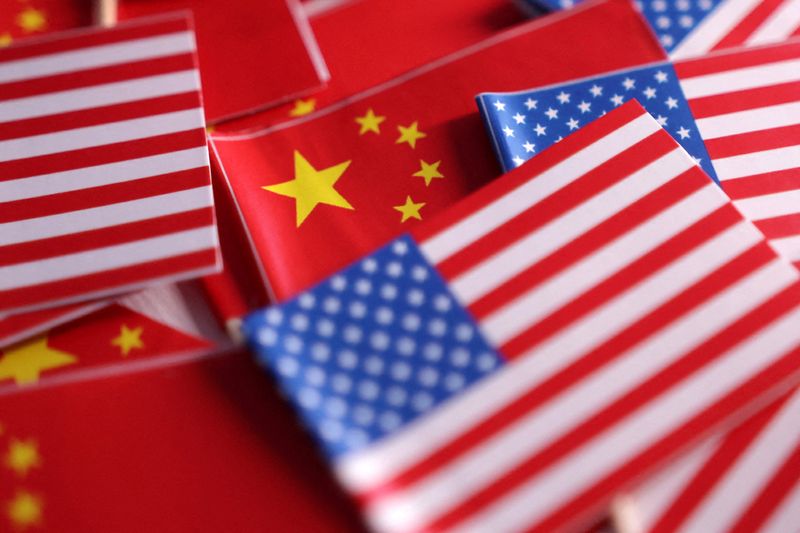China’s K Visa Targets Global Talent as U.S. Immigration Costs Rise

China’s new visa program targeting foreign tech professionals launches this week, offering an alternative pathway for international STEM graduates at a time when changes to U.S. visa policies are prompting many to explore other options.
Although China already has a large pool of skilled engineers, the introduction of the K visa is part of broader efforts to position the country as open to foreign talent and investment. This comes as ongoing trade tensions and tariffs contribute to uncertainty in China’s economic outlook.
In recent months, China has rolled out several initiatives aimed at boosting foreign investment and tourism, including expanding access to various sectors and offering visa waivers for travellers from countries such as Japan, South Korea, and several in Europe.
“The symbolism is powerful: while the U.S. raises barriers, China is lowering them,”
said Iowa-based immigration attorney Matt Mauntel-Medici, referring to the K visa, which becomes available on Wednesday.
Announced in August, the K visa is aimed at young international graduates in science, technology, engineering, and mathematics (STEM) fields. It offers entry, residency, and employment without the need for a job offer—an appealing option for individuals seeking flexible pathways outside the United States.
Earlier this month, the current U.S. administration announced plans to raise the cost of the H-1B visa, commonly used by tech companies to hire skilled foreign workers, to $100,000 per year for each worker.
“The U.S. has definitely shot itself in the foot on H-1Bs, and the timing is exquisite for China’s K visa,”
said Michael Feller, chief strategist at Geopolitical Strategy.
Several other countries, including Germany, South Korea, and New Zealand, are also revising immigration rules to attract skilled professionals.
Experts say one of the K visa’s most attractive features is the absence of a requirement for employer sponsorship—long seen as a significant hurdle in the U.S. system.
The H-1B visa currently operates under a lottery system with an annual cap of 85,000 slots. The newly proposed fee may further discourage applications.
“It’s an appealing alternative for Indian STEM professionals seeking flexible, streamlined visa options,”
said Bikash Kali Das, an Indian student at Sichuan University. India accounted for 71% of all H-1B recipients last year.
Despite its potential, the K visa faces several unanswered questions. Government guidelines remain vague on eligibility criteria such as age, education, and experience. Details regarding employment support, financial benefits, long-term residency, or family sponsorship are not yet clear. China also does not offer citizenship to foreign nationals except in rare cases.
China’s State Council has not released additional information regarding the implementation or strategic goals of the K visa.
Language remains another challenge. Most Chinese tech firms operate in Mandarin, which may limit opportunities for those who are not fluent. Additionally, geopolitical tensions could impact the visa’s appeal among applicants from certain countries.
“China will need to ensure Indian citizens feel welcome and can do meaningful work without Mandarin,” said Feller.
Historically, China’s talent recruitment programs have focused on attracting overseas Chinese or China-born researchers. Recent efforts have included incentives such as home purchase subsidies and signing bonuses of up to 5 million yuan (around $702,000). These policies have been particularly effective in encouraging U.S.-based Chinese professionals to return.
“The recruitment effort targeting Indian tech talent in China is growing but remains moderate compared to the more intensive, well-established, and well-funded initiatives aimed at repatriating Chinese STEM talent,” said Das.
A Chinese STEM graduate who recently received a job offer from a tech firm in Silicon Valley expressed doubts about the new visa’s long-term impact.
“Asian countries like China don’t rely on immigration and local Chinese governments have many ways to attract domestic talent,” he said, requesting anonymity.
While China currently hosts about 1 million foreign residents—less than 1% of its population—the United States has over 51 million immigrants, representing 15% of its population.
Though large-scale immigration changes in China remain unlikely, analysts suggest the K visa could still enhance the country’s competitiveness in global tech development.
“If China can attract even a sliver of global tech talent, it will be more competitive in cutting-edge technology,” Feller said.
